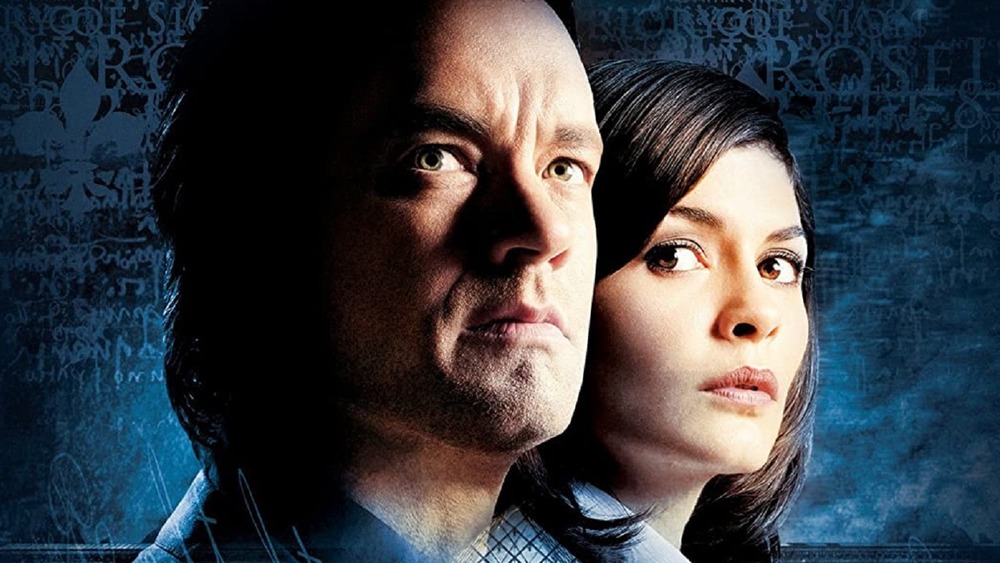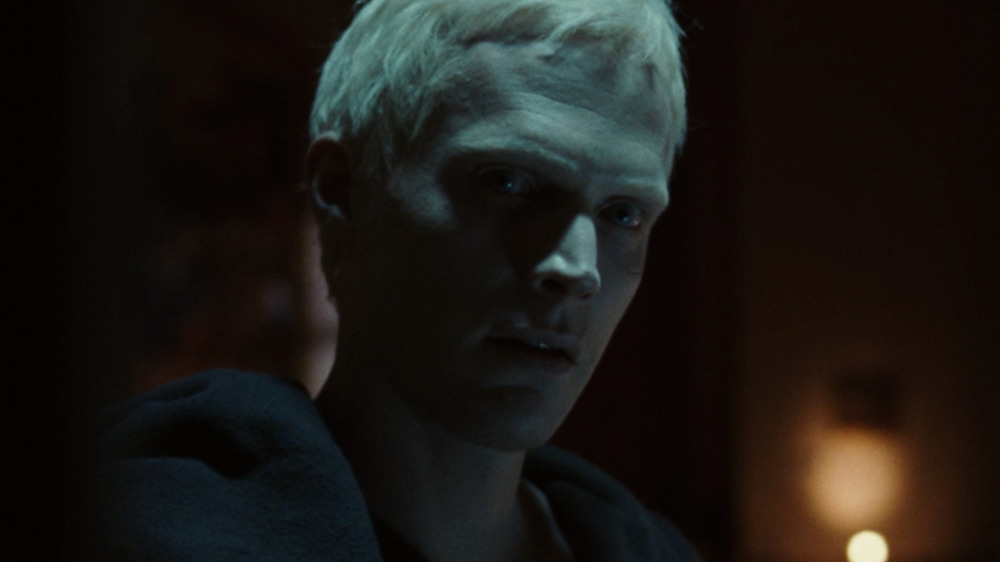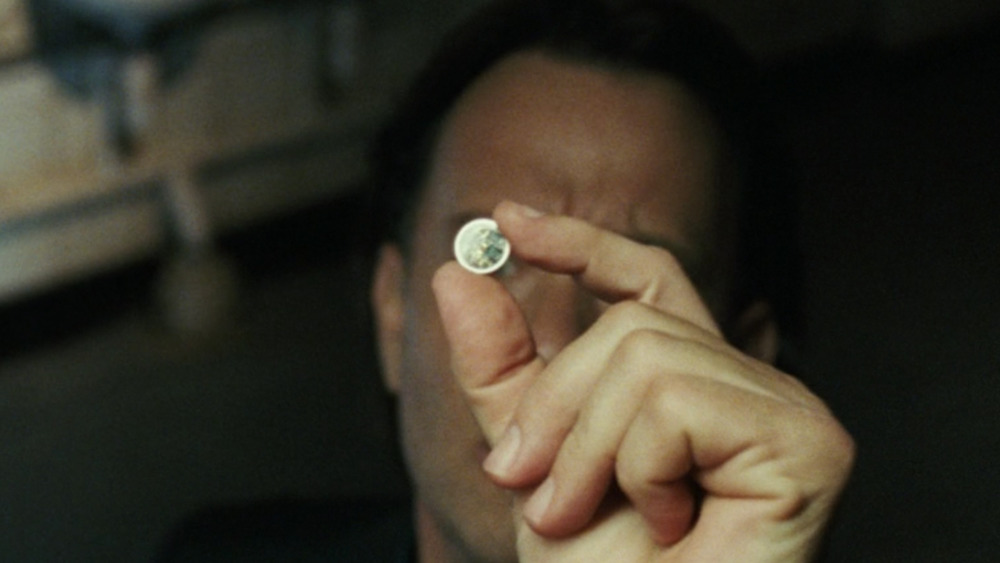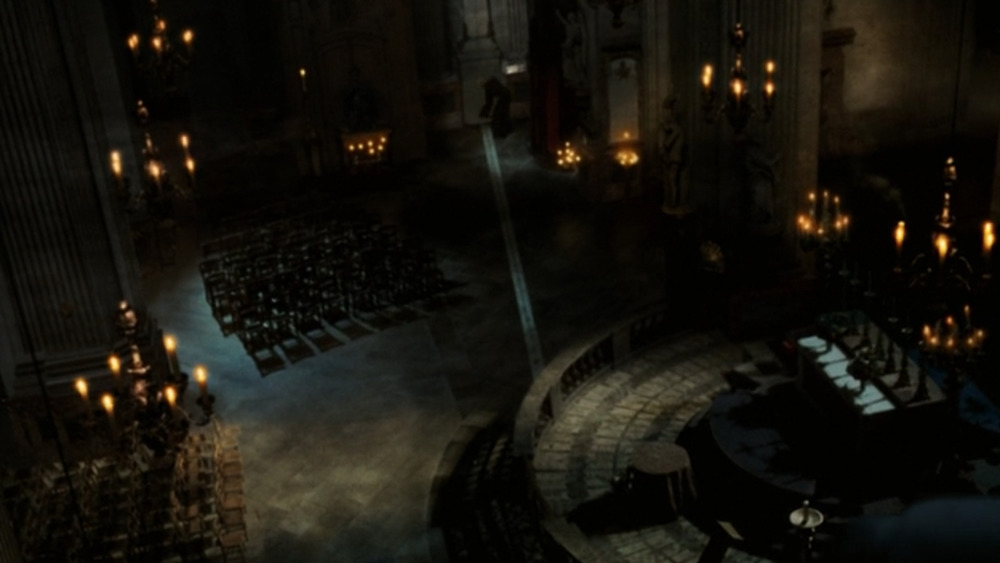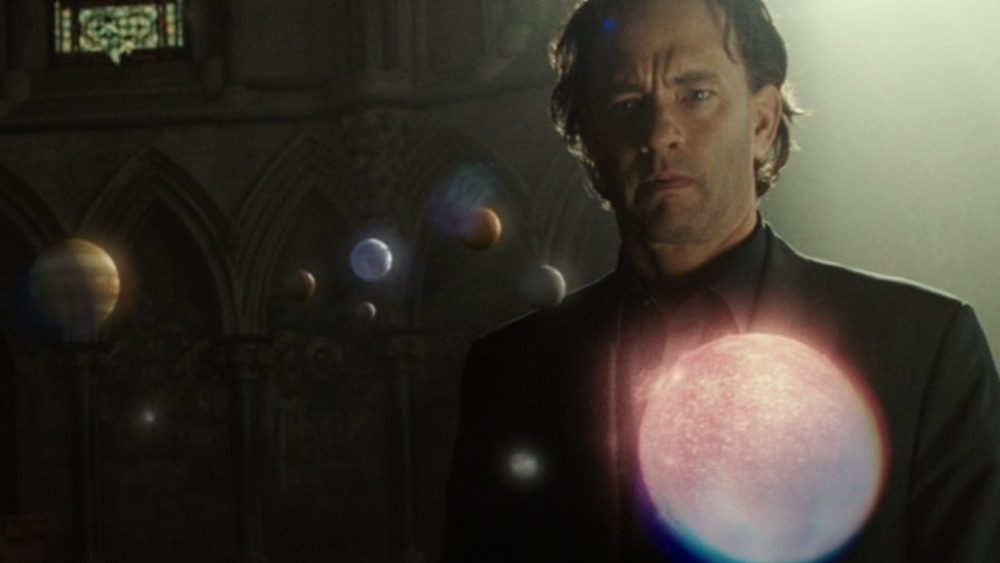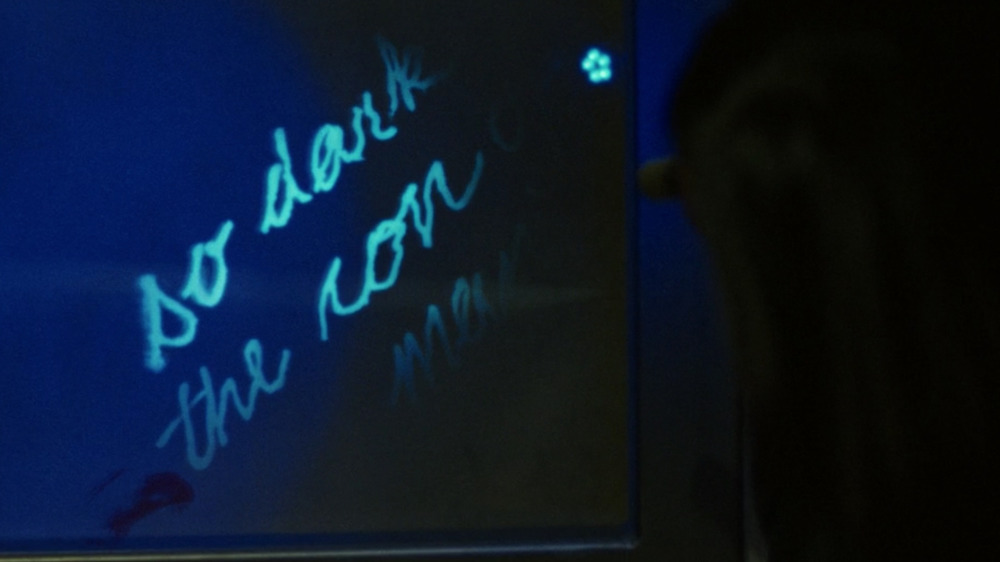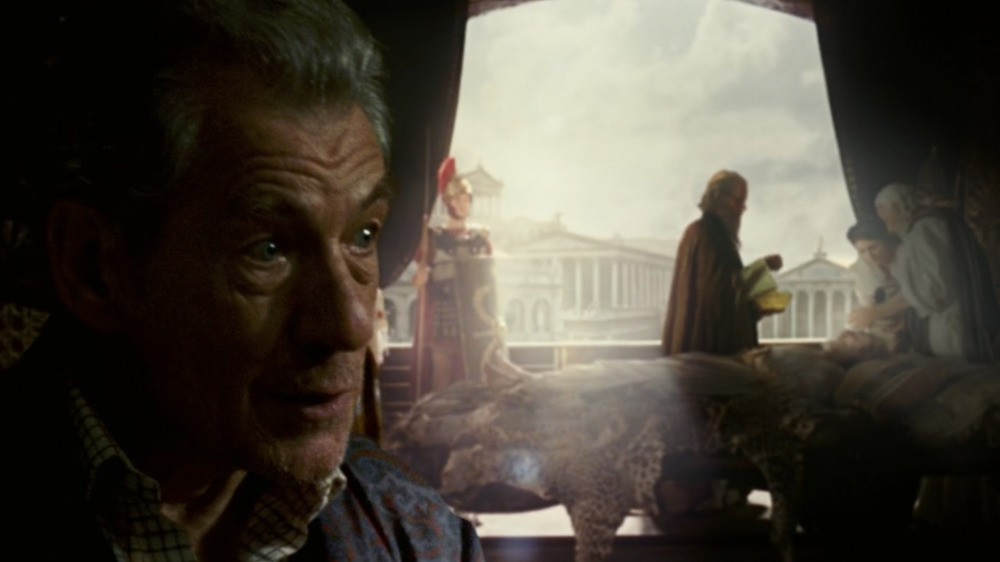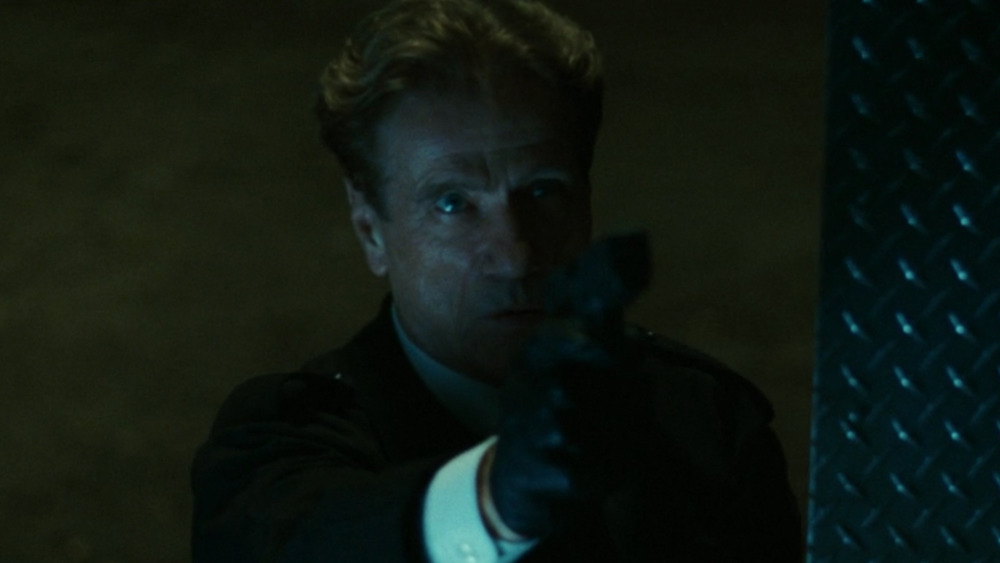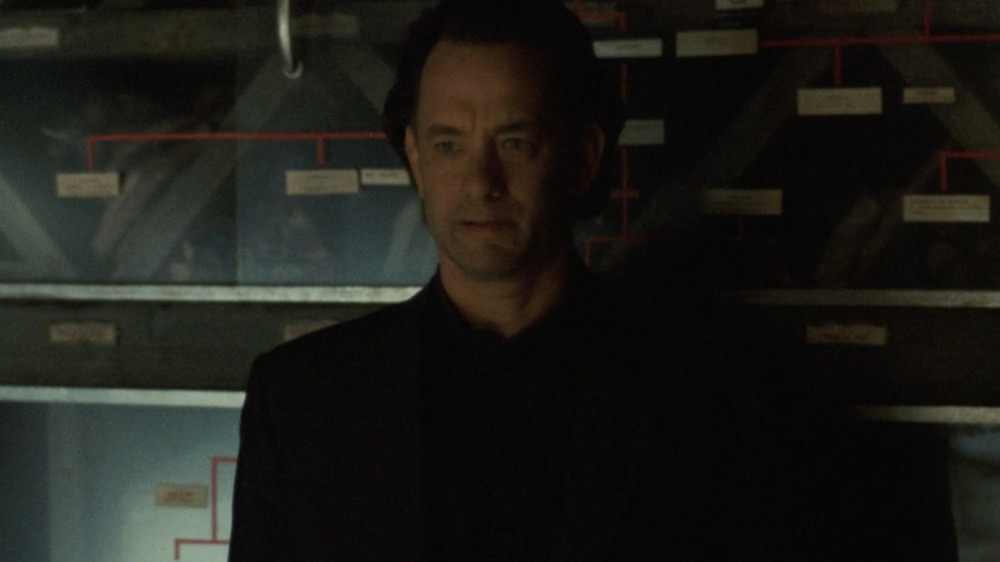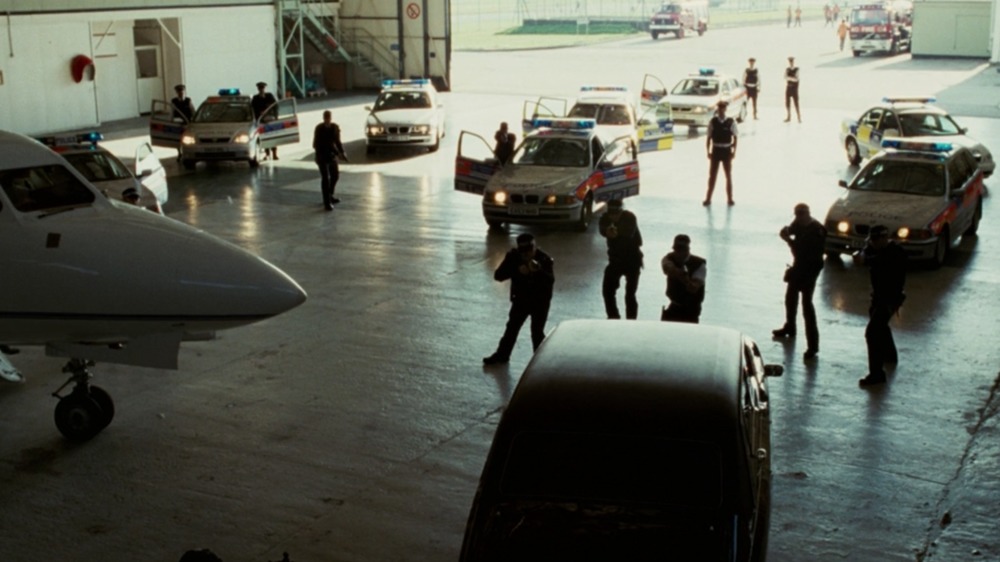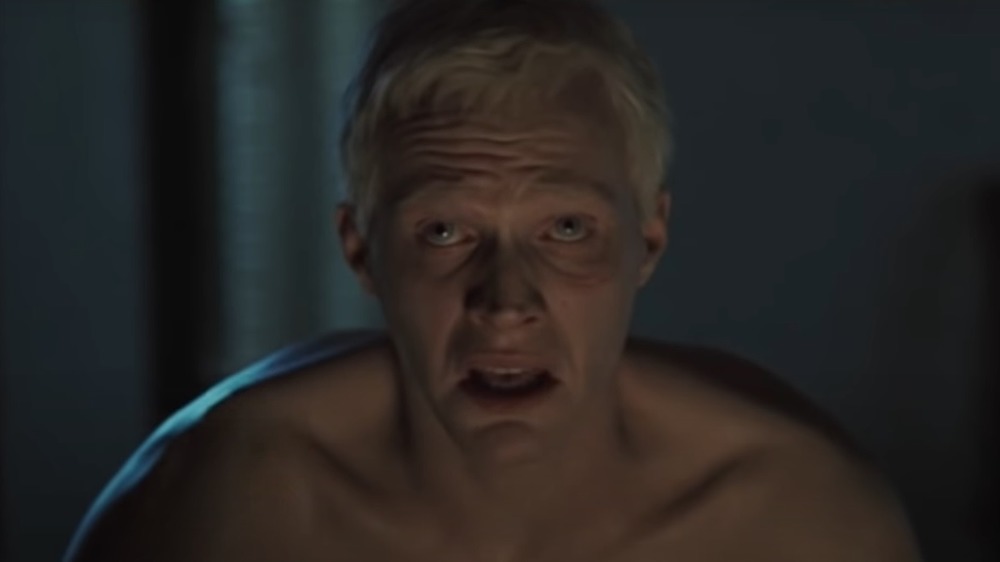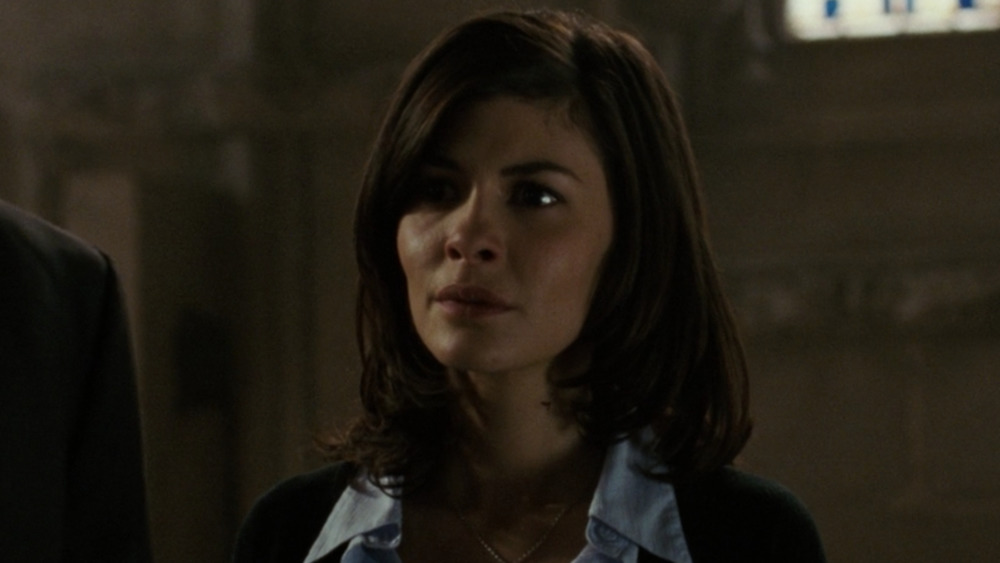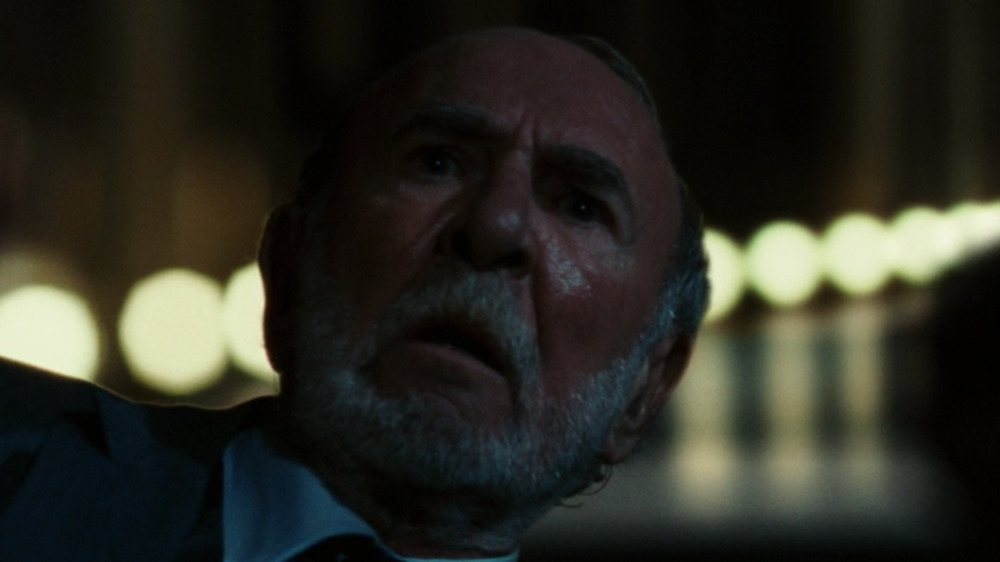Things You Only Notice The Second Time You Watch The Da Vinci Code
The Da Vinci Code was published in 2003 and immediately caused a massive uproar among the religious community. That's no surprise when you consider its scandalous plot involving the divinity of Jesus Christ. The Da Vinci Code is able to weave truth and fiction so efficiently that it still has historians dancing in circles. Written by Dan Brown, The Da Vinci Code is one of the best-selling novels of all time, with over 80 million copies sold, and this type of popularity requires cinematic adaptation. Needless to say, producers spared no expense.
Mega-star Tom Hanks was tapped for the lead, and direction was handled by the legendary Ron Howard. The result was an elaborate scavenger hunt through history, complete with murder and mystery. As for the plot, Robert Langdon (Hanks) is chased through Paris by a malicious, religious zealot named Silas (played by Marvel alumni Paul Bettany) while he unravels a 2,000-year-old secret. The slew of information being thrown at us was overwhelming the first viewing, which is probably why we only noticed these things the second time we watched The Da Vinci Code.
(Warning — there are spoilers below.)
Silas breaks into the Louvre with ease
The Da Vinci Code opens in the legendary museum known as the Louvre, where its curator, Jacques Saunière (Jean-Pierre Marielle), is frantically trying to escape a hooded intruder. The assailant reveals himself to be the devout assassin known as Silas (Bettany). The extremist appears to extract the information he seeks from Saunière and then shoots him in the stomach, leaving him to slowly die surrounded by humanity's greatest works of art. The mysterious opening kickstarts the mystery thriller, but a second viewing has us asking more questions than before.
Considering that this is the most renowned art museum in the world, the whole invasion comes off remarkably easy. Silas marches through a dark, gloomy Louvre while brandishing a pistol against zero security. Adding to the mystery of his entry is the question of how he manages to escape. In order to stave off his attacker, Saunière removes a piece of art from the wall to activate the security system. The maneuver does absolutely nothing, though. Silas delivers a gut shot and strolls out. One would assume that the building housing the Mona Lisa would be equipped with beefy security, but according to The Da Vinci Code, it's near non-existent.
Captain Fache has access to James Bond gadgets
When Robert Langdon is yanked away from his adoring fans at a book signing by police, the cops present themselves as being interested in his expertise. Law enforcement is baffled by what Saunière did to himself post-bullet wound, as a smattering of symbols written in blood surrounds his corpse. However, Langdon discovers that the man leading the investigation, Captain Fache (Jean Reno), is fixated on him as the primary suspect. Apparently, while he was dying, Saunière wrote Langdon's name in blood — "P.S. Find Robert Langdon" — and Fache views this as damning evidence. Soon after, Sophie Neveu (Audrey Tautou) enters the mix and reveals some truth ... as well as a tracking device planted in Langdon's pocket.
The tracking device is shown to be remarkably sleek — smaller than a button. We aren't entirely positive as to France's technological advances, but we remember still sending messages through a rigorous T9 texting system in 2006. Even by today's standards, the 007-techno-gadgetry planted in Langdon's pocket is incredibly sophisticated tech for a murder that just occurred earlier that evening. Maybe it's Captain Fache who isn't all that he seems? What secrets are you hiding, you smoldering French sex pistol?
How did Silas know which tiles to smash?
After a successful murder, Silas follows his new information to a quaint little church, and his connections have gained him entry to the holy place in the dead of night. As for the info he extracted, Silas learned that "it hides beneath the rose." And "the rose" refers to the "Rose Line" (a fictional representation of the Paris meridian), which runs straight through this church and is displayed with white tiles and a shimmering strip of gold inlay. Silas walks to a section of the tiles and proceeds to pulverize the floor. Now, the Rose Line runs across this entire church, so how did Silas know to smash the tile in this specific spot?
It's fun to imagine that Silas' self-inflicted lashes grant the albino mercenary with divine sight, but we know Dan Brown isn't quite so fanciful. In fact, there are details from the book that fill in these discrepancies, but that doesn't save us from furrowing our brows while we enjoy the cinematic version. It makes us feel like there was information Ron Howard accidentally left out.
Robert Langdon is the mightiest of bookworms
You may be a wizard at solving the occasional sudoku puzzle, but have you tried while a gun is aimed at you? Added pressure can cause our cranial processor to misfire on even the simplest of queries — an entertaining effect that serves as a comedic tool for most game shows. On that note, Robert Langdon's ability to combine his encyclopedic mind with a penchant for puzzle-solving is an impressive talent. And the dangers in Paris do little to disrupt Langdon's mind from efficiently sorting through a complex mystery.
On top of all that, the constant flow of information from the professor should feel more droll, but the mighty Tom Hanks makes all his dialogue feel so matter-of-fact that his powers of intellect don't dominate the screen. But keying in on his character a second time around shows a much more impressive hero than we initially gave him credit for. The man may not be able to zip through the air or obliterate obstacles with his magical hammer, but watching his brain work through the greatest cover-up in human history is a fascinating ordeal. And it's one that's more impressive once your brain has had time to process all the information. Behold, the mighty bookworm!
Police can't follow a literal blood trail in The Da Vinci Code
Let's double back to what started this all for a moment and recall the wounded Louvre curator, Saunière, crawling through the museum and assembling bloody puzzle pieces for his estranged granddaughter. We're now more impressed with the Priory elder's resilience. The man must've been slowly dying for a while to set up the trail of clues he did. The final actions of the dying man are impressive, but its efficiency is exaggerated. How is it that crime scene investigators failed to notice the pools of blood spattered across the museum?
The trail doesn't feel quite so well-hidden on the second viewing. After all, there are actual pools of blood in front of the Mona Lisa and Madonna of the Rocks. It may have been that everyone was distracted by how Saunière's body was displayed, but it feels weird that police failed to spot other clues at the crime scene. Investigating, at its bare minimum, certainly includes following pools of victim blood to their destination.
There are a huge amount of coincidences that line up too perfectly
The Priory of Sion has spent thousands of years carefully laying out a labyrinth of mysteries and puzzles leading to their prime objective. All the situations that line up and propel the movie forward make sense in this regard. What gets a bit too circumstantial is all the connections involved with Langdon and others in current times, with the biggest of all being that Langdon just so happens to be chummy with Ian McKellan's character, the Teacher, the primary antagonist pulling all the strings.
Also, what a miraculous coincidence that the lead investigator on this murder case happens to be pals with the bishop hired by the Teacher! Bishop Aringarosa (Alfred Molina) feeds Fache false information, directing the captain onto Langdon's trail like a bloodhound. And that's not mentioning that the last living descendant of Jesus Christ also happens to work in the same office as the investigators. How wonderfully convenient that every major player from across the world converges in the same town on the same night. The complexity of all the truth weaving together distracts from the liberties taken with story progression, but the circumstances pile up on each other more with each viewing.
The bank manager's plan made no sense
After following a trail of blood and anagrams in the Louvre, Langdon and Sophie find a high-tech key to a bank vault hiding behind the Madonna of the Rocks. At the bank, a night manager named Andre Vernet (Jürgen Prochnow) guides them through the necessary protocols, and a safety deposit box is retrieved that provides the two with another clue to the mystery. But while they're analyzing their new information, Vernet bursts in and informs them that the police are aware of their location, and he will help them escape. (Apparently, the safety deposit box's account comes with a clause that provides help for such an occasion.) The manager smuggles them out in the back of an armored transport and appears to be a swell guy who can handle himself under pressure.
However, when they finally stop and he lets them out of the truck, Vernet pulls a gun, attempting to detain them for police. The whole ordeal makes no sense. What exactly is the point of helping them escape only to detain them? You could argue the manager was fulfilling his contractual obligations for the safety deposit box they accessed and then veered off into his own self-righteous motivations once he was able. That hardly seems likely, though. We're thinking the guy was making things up as he went along, and he isn't quite as adept at mental processes as Langdon and others.
In The Da Vinci Code, the Holy Grail doesn't prove much
For centuries, people have sought out the Holy Grail for whatever powers it may hold. But The Da Vinci Code's mystery reveals that the Grail isn't a cup. Instead, it's the proof of Jesus Christ's humanity. The trail of clues leads to a church containing mountains of records in regards to the Son of God's bloodline, beginning with his marriage to Mary Magdalene. You can understand why this is such a closely guarded secret. What we don't understand is how anyone can prove anything with this information.
They may have a sarcophagus containing the body of Mary Magdalene. They may have detailed records of the bloodline of Jesus Christ leading directly to Sophie Neveu. But doesn't all this merely detail Mary Magdalene's bloodline and not so much Jesus Christ's? Nothing contained in the Holy Grail actually connects directly to Jesus. Even if DNA was extracted and compared to Sophie's, the only thing proven would be she is related to a 2,000-year-old mummy that isn't even the Christ.
Police at the airport are a little too dumb
In order to elude the police, Langdon and the gang take off in Sir Teabing's (McKellan) plane to another European destination. But when they arrive at the airport, it's riddled with squad cars and police with their guns drawn. Langdon and Sophie are very clever in dipping off the plane just before the cops bust in, and they then proceed to hide in Teabing's car. Teabing and his chauffeur then drive out unhindered after an explanation involving a doctor's appointment. What a wonderfully clever escape ... thanks mostly to the immense stupidity of the police.
There's a lengthy search done to the airplane but not so much as a glance into the backseat of the car. With the severity of the situation, it's highly unlikely that Langdon and Sophie would've escaped so easily in real life. It's hard to imagine that an entire squadron of police with guns drawn would suddenly step aside because Teabing has a doctor's appointment to get to. Or we are severely underestimating the power of being an old rich guy?
Silas constantly has open wounds
Silas is a man of extreme faith and discipline. He takes part in a ritualistic chastising of his human form — whipping his body and fastening a row of jagged metal teeth to his leg. The display leaves you properly intimidated by who's pursuing Langdon and Sophie. A man of this type of self-torturous discipline is someone who should be feared. At least that's what we thought the first time we watched The Da Vinci Code.
Another watch through the movie reveals Silas to be more frail than we realized. In most of his scenes, he's limping through the room, no doubt because of the open wounds laced around his thigh. It isn't the most practical way to live, walking around town with festering wounds and opening up fresh ones each night. Silas isn't quite so intimidating when you know an infection could cripple him at any moment.
The Priory doesn't protect the last descendant of Christ
So, Sophie is the last living descendant of Jesus Christ. For the lengths gone to protect this secret, the Priory sure doesn't look like it was keeping Sophie safe. The woman works on the police force, which is hardly a safe environment for anyone. She's estranged from her family and lives alone in Paris. Even without any type of danger in her life, the woman could be one traffic accident away from ending the bloodline of Jesus Christ forever.
No one from the Priory steps forward to inform her of anything involving this fact. Once her grandfather dies, she's still left alone to seek out answers on her own. Even while letting Sophie live a normal life, unaware of her lineage, you'd want some sort of safeguard in place. There appears to be none. For all the talk of the Priory of Sion's guarding of such a valuable treasure, they don't do much to actually protect that treasure — aside from riddles and a cryptex.
Saunière made things needlessly complicated in The Da Vinci Code
A second viewing of The Da Vinci Code grants us with an awareness of where we're heading when the movie starts. Saunière's murder at the beginning kickstarts this entire film, and his complex puzzle is our first clue. The whole bloodsoaked ordeal doesn't feel necessary the second time around, though. Instead, if Saunière had told Sophie to go home, we could've saved ourselves a whole lot of bullets.
When the final location is revealed, it comes with a greeting from the Priory of Sion, which happens to claim Sophie's grandmother as a member. The collective will likely fill Sophie in on any additional information in regards to the Holy Grail, but her finding them adds to the perplexing nature of Saunière's death. The museum curator could've not even done anything, and the remaining members of the Priory would likely seek out their one and only link to the truth of Jesus Christ. Perhaps years of shrouding every action in mystery blinded Saunière to the fact that everything doesn't have to be so complicated. Then again, without the puzzle, we wouldn't have Tom Hanks in the mix, and that is simply unacceptable.
